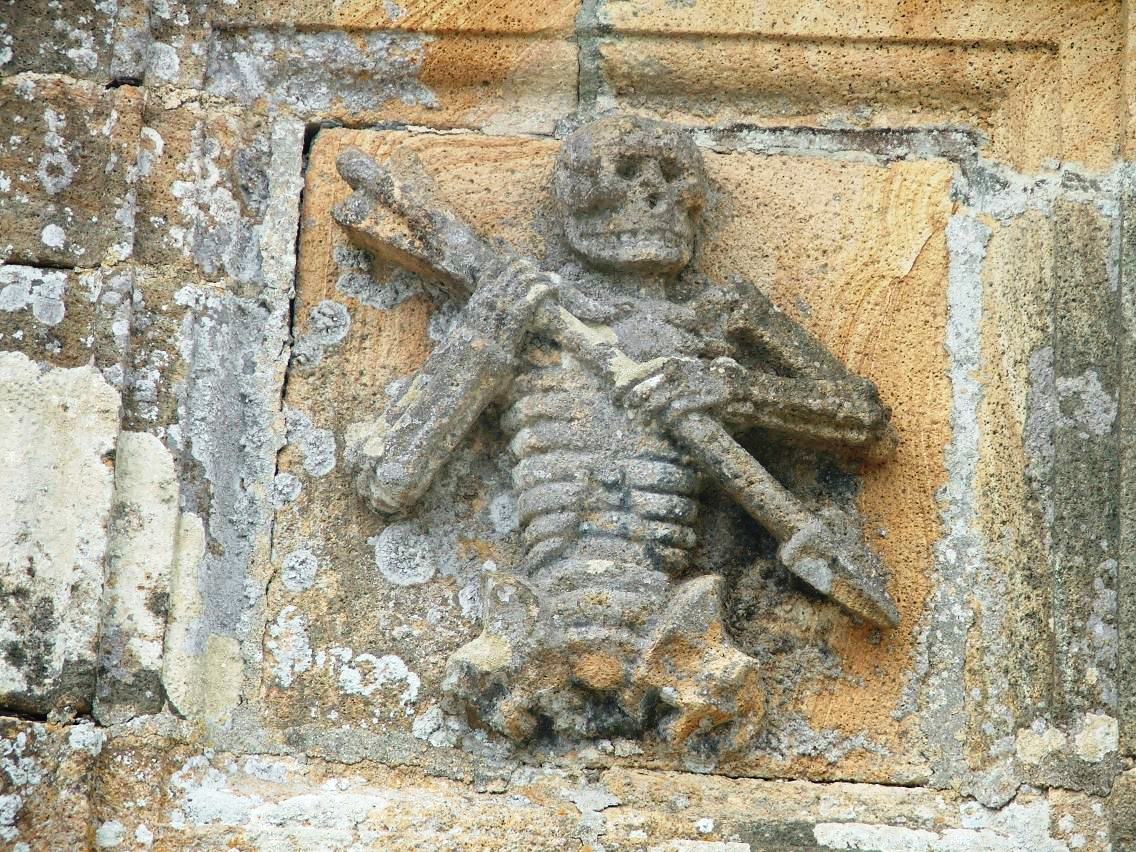Origins of the name and ancient representations
The Ankou is the personification of death and/or his worker whom the role is to search out the dying and accompany them to the other world after having made them pass from life to death. The name comes from the Celtic « nek » signifying to kill, to perish. The first known mention of this word is a gloss from a latin text dating back to the IXth century.
The different functions of the Ankou and it's attributes
Other than deadly and guiding the deceased to the next world, popular belief attributes other functions such as that of gravedigger, of messenger of the dead, or even as a justiciary (righter of wrongs). On the contrary to what we generally think, the most common attribute is not originally the scythe. Actually, in the most ancient representations whether they be sculpted, painted or literary, according to each case, he holds either a lance, a javelin, a fletched arrow and also, in his role as gravedigger, he carries a spade, a pick or a hoe. It is only in the writing of folklorists of the XIXth century and later that he will take in his hands the tool of the reaper of life. The function as messenger of the dead, translates itself by the symbol of the grinding wheels of his cart, karr an Ankou, at nightfall, three days before a death in the family or in the neighbors one will hear it. He is seconded in this task by the bird of death, the barn owl, lapous an Ankou who's nocturnal cry is bloodcurdling.
More we advance in time, and more the Ankou becomes human in the popular beliefs or imagination.
The Ankou in the oral tradition until today
Following the different parts of Lower-Brittany, The Ankou is the first dead of the year or the last from the year before. That is to say, he is renewed each year. It's age and it's importance. If he is young, he will try to take people of his generation. If he is an old person, the aged have worries in the coming months. The personality of the one who holds the role of the Ankou has also it's consequences. If they have the reputation of having been a mean person, he will go looking for a lot of people.
He is not alone to carry out his task. He is assisted by the second on the list of deceased in a parish. It is he who guides the horse by the bridle, opens the gates or conducts the loading.
Rather than hanging in a shroud, the Breton Ankou, as it is described from the XIXth century, is dressed like the people of the country. He hides his face under a wide-brimmed black felt hat under which we distinguish his long white hair. We can also see his large skeletal silhouette under a long black coat.
The descendant of a God ?
Some researchers wanted to establish a connection between the Ankou and Sucellos, The Gallic god with a mallet from a Breton expression, morzholig an Ankou, The little hammer of death, name of the deathwatch beetle, an insect which the markings in wood are a disastrous symbol. However, this tool doesn't figure in the criminal equipment of the Ankou. On the other hand, another element of belief equally in relation to death, the blessed mallet, ar mell benniget could give a lead heading in that direction. But again, no proof to this day has put this object in the hands of the Ankou.
Today, the Ankou is a character in comics and he is sometimes represented symbolically in the processions protesting against the closure of companies.


